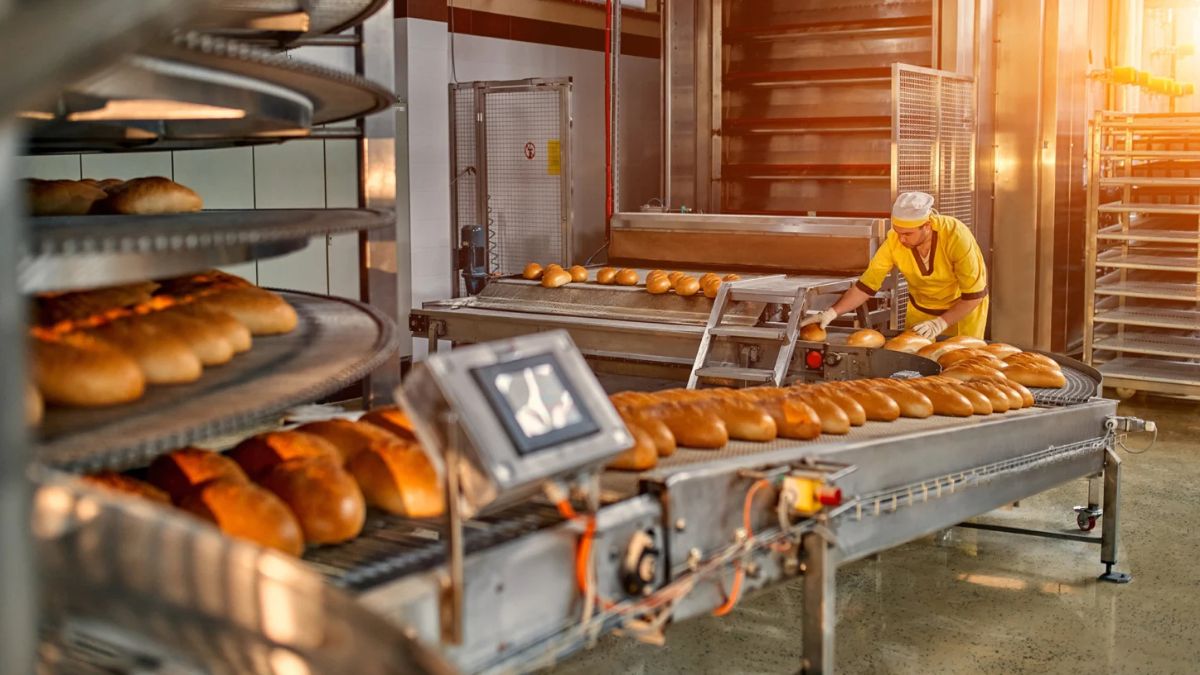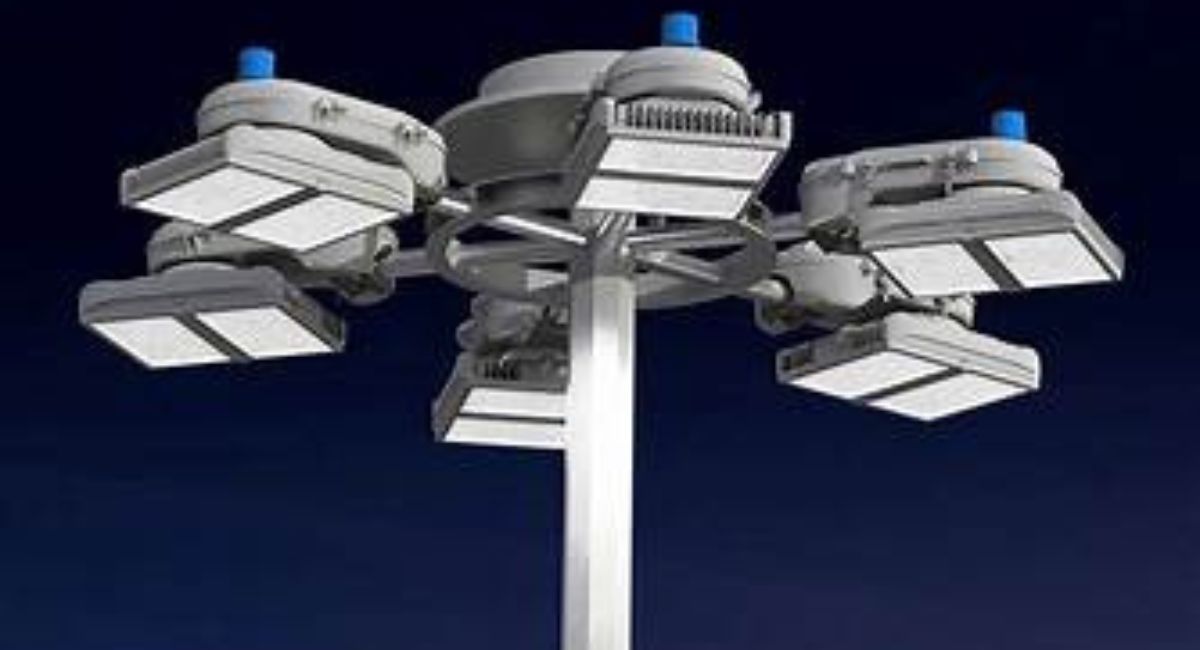HOME
The Ultimate Guide to Understanding Compliance Regulations

Staying compliant with regulations isn’t optional—it’s critical. Businesses that fail to adhere to compliance requirements risk serious consequences, including fines, legal action, reputational damage, and loss of customer trust. But compliance can feel overwhelming with its constantly evolving rules and industry-specific requirements.
This guide breaks down compliance regulations into manageable sections, helping you understand what they are, why they matter, and how you can keep your business fully compliant.
What Are Compliance Regulations?
Compliance regulations are sets of rules, laws, and standards that businesses must follow to operate legally and ethically. These can vary depending on industry, geography, and company size. They aim to protect stakeholders, ensure fair business practices, and mitigate risks across industries.
Compliance extends beyond legal requirements. It also includes meeting industry best practices and adhering to internal policies designed to secure customer data, ensure fairness, and maintain the stability of business operations.
Common Types of Compliance Regulations
-
Data Privacy Regulations
- Examples include GDPR (General Data Protection Regulation) and CCPA (California Consumer Privacy Act).
- Focuses on how businesses collect, store, and use consumer data.
-
Financial Compliance
- Regulations such as Sarbanes-Oxley Act (SOX) and Payment Card Industry Data Security Standard (PCI DSS).
- Ensures accuracy in financial reporting and secure payment processing.
-
Health & Safety Compliance
- Includes OSHA (Occupational Safety and Health Administration) standards for workplace safety.
- Prioritizes the health and welfare of employees.
-
Environmental Compliance
- Enforced by laws like the Clean Air Act or REACH (Registration, Evaluation, Authorization, and Restriction of Chemicals in the EU).
- Responsible for reducing business impacts on the environment.
Why Compliance is Essential for Every Business
Adopting a strong compliance strategy isn’t just about meeting regulatory obligations—it offers concrete benefits that support your business’s stability and growth. Here’s why compliance matters:
- Avoid Fines and Penalties: Governments and organizations enforce strict fines for non-compliance, ranging from thousands to millions of dollars.
- Protect Your Reputation: Compliance demonstrates to customers, employees, and investors that your business operates ethically and transparently.
- Reduce Operational Risks: A compliance-first approach reduces the chance of disruptions due to legal issues or data breaches.
- Increase Customer Trust: Meeting standards like GDPR or PCI DSS reassures customers that their data is safe in your hands.
How to Build a Compliance Strategy
Following these steps can help you create a robust compliance strategy tailored to your business needs:
1. Understand Industry-Specific Requirements
Every industry has unique regulations. For instance:
- Healthcare businesses must follow HIPAA (Health Insurance Portability and Accountability Act).
- Fintech firms must comply with anti-money laundering (AML) laws.
Research the rules applicable to your industry and create a compliance checklist.
2. Train Your Team
Compliance is a team effort. Ensure your employees understand the regulations that relate to their roles through regular training sessions. Topics could include data protection, workplace safety, or fraudulent activity awareness.
3. Conduct Regular Audits
Perform routine audits to identify non-compliance risks. Internal reviews can reveal gaps in processes and ensure your business adheres to all relevant standards. If needed, hire external compliance experts to assess your business thoroughly.
4. Invest in Technology
Compliance software tools can simplify tracking regulations, managing documentation, and monitoring security protocols. Automating compliance reduces the likelihood of human error while also keeping you up to date with regulatory changes.
5. Stay Updated on Regulatory Changes
Regulations evolve with shifting market conditions, technological advancement, and legal updates. Appoint a compliance officer to keep your business informed and adapt policies as needed.
6. Establish a Reporting System
Encourage a culture of transparency by implementing systems where employees can anonymously report compliance concerns or violations without fear of retaliation.
Navigating Compliance Challenges
Although compliance is essential, businesses still face hurdles in staying compliant:
- Complexity of Global Regulations: If your business operates in multiple countries, you need to manage an array of local laws.
- Rapidly Changing Laws: Industries like technology or finance routinely introduce new laws, making it hard to keep pace.
- Small Business Resource Constraints: Small businesses often lack dedicated compliance teams or technology to monitor compliance.
The solution? Focus on your top vulnerabilities first and gradually expand your compliance initiatives. Tools like compliance management software and external consultants can also help lighten the load.
The Role of Technology in Simplifying Compliance
Modern technology solutions can streamline compliance efforts, making the process faster and more efficient. Here are a few examples of how businesses are leveraging technology to stay compliant:
- Data Management Tools: Solutions like Netrust help businesses remain GDPR- and CCPA-compliant by managing customer data securely.
- Audit and Reporting Tools: Platforms like Networx simplify audits, reducing time spent preparing compliance reports.
- Employee Training Platforms: Use platforms like Truliant or Absorb LMS to deliver compliance training quickly and effectively.
Investing in the right technology is a pivotal step towards effortless compliance.
Wrapping Up
Compliance regulations may seem daunting, but they’re an integral part of running a responsible and successful business. Whether you’re ensuring customer data privacy or fostering a secure workplace environment, compliance protects your business while boosting trust.
Start by implementing small, actionable steps like conducting audits and training your team. For more complex requirements, invest in compliance-focused technology to ensure accuracy and consistency.
Remember, compliance isn’t a one-and-done task—it’s an ongoing process. But with the proper framework in place, you’ll be on the right track to building a compliant, trustworthy business.
HOME
Knead to Know: A Guide to Bakery Manufacturing Processes

Meta Description: Discover the step-by-step bakery manufacturing process—from mixing and baking to cooling, packaging, and quality control. Read on to learn more.
The aroma of freshly baked bread, the delicate flakiness of a croissant, or the rich sweetness of a cake—bakery products have a way of delighting our senses like nothing else. But behind every treat lies a complex and carefully orchestrated manufacturing process. Whether you’re an aspiring baker, a food industry enthusiast, or simply curious about what goes on behind the scenes, understanding bakery manufacturing is both fascinating and informative.
Understanding the Basics of Bakery Manufacturing
Bakery manufacturing is more than just mixing flour and sugar; it’s a combination of art, science, and precision. At its core, the process involves transforming raw ingredients into finished products that are consistent, safe, and appealing to consumers. Large-scale bakeries focus on efficiency and quality control, ensuring every loaf of bread or batch of cookies meets rigorous standards.
The process typically begins with ingredient selection. High-quality flour, sugar, fats, yeast, and other additives are crucial for achieving the desired texture, flavor, and shelf life. Modern bakeries often use automated systems to weigh and measure ingredients with precision, minimizing human error and maintaining consistency across batches.
Mixing and Kneading: The Foundation of Bakery Products
Once ingredients are measured, mixing and kneading are the next steps. Mixing combines ingredients evenly, ensuring uniformity in taste and texture. Kneading, particularly in bread production, develops gluten—a protein that gives dough its elasticity and structure.
Industrial mixers and kneaders are designed to handle large quantities of dough, maintaining consistent quality across production lines. The speed, duration, and intensity of kneading are carefully calibrated, as these factors can significantly affect the final product. For example, over-kneading can result in a tough loaf, while under-kneading may produce bread that lacks structure.
Fermentation and Proofing: Bringing Dough to Life
Fermentation is the stage where yeast works its magic, converting sugars into carbon dioxide and alcohol. This process causes the dough to rise, creating the airy texture we associate with bread and rolls. Temperature and humidity control are critical here, as they influence yeast activity and overall dough development.
Proofing, the final rise before baking, is equally important. Proper proofing ensures that bakery products achieve the right volume and texture. Large-scale bakeries often use proofing chambers, which maintain optimal conditions for consistent results.
Baking: The Art of Transformation
Baking is where science and art converge. The dough transforms into a finished product through heat, with proteins coagulating, starches gelatinizing, and sugars caramelizing. The type of oven—convection, deck, or rotary—can impact the crust, crumb, and flavor.
In commercial bakery production, ovens are often automated, with precise control over temperature and baking time. This ensures products are cooked evenly and meet quality standards. Monitoring is continuous, with sensors and timers ensuring that nothing is left to chance.
Cooling, Packaging, and Storage
After baking, it’s essential that products cool efficiently to avoid condensation, which can cause soggy textures or spoilage. In large-scale bakeries, cooling conveyors are often used to move products steadily through a controlled cooling environment, ensuring uniform temperature reduction while keeping production continuous.
Once cooled, packaging becomes the next crucial step. Effective packaging protects the baked goods, prolongs shelf life, and conveys branding and nutritional information to consumers. Many modern bakeries rely on automated packaging systems that can wrap, seal, and label items quickly and accurately. Finally, proper storage—whether at ambient temperatures or under refrigeration—preserves freshness and quality, ensuring the bakery products reach customers in perfect condition.
Quality Control and Safety Measures
Throughout the entire manufacturing process, quality control is paramount. From ingredient inspection to final product testing, bakeries follow strict protocols to maintain safety and consistency. Hazard analysis and critical control points (HACCP) guidelines are commonly implemented to prevent contamination and ensure food safety.
Innovation and Sustainability in Bakery Manufacturing
The bakery industry continues to evolve with technological innovations and sustainability practices. Automation, energy-efficient ovens, and eco-friendly packaging are becoming standard in modern bakeries. Additionally, experimentation with alternative flours, natural preservatives, and healthier recipes allows bakeries to cater to changing consumer preferences.
In Conclusion
Bakery manufacturing is a fascinating blend of precision, science, and creativity. Every loaf of bread, cookie, or cake you enjoy is the result of careful planning, meticulous processes, and quality control at every stage. From ingredient selection to packaging, each step is essential in creating products that are not only delicious but also consistent and safe.
Understanding the bakery manufacturing process not only deepens our appreciation for these culinary delights but also highlights the skill and dedication required to bring them from the mixing bowl to our tables. So, the next time you bite into a perfectly baked pastry, remember—the journey from dough to delight is both an art and a science.
HOME
Why High Mast Lighting Is Becoming A Standard in Modern Sports And Freight Facilities

Lighting is no longer just an ill functional requirement in construction design; it is vital for performance, safety, and efficiency. Castel terminals and sports stadiums now fully make use of high LED light systems for illumination. More sophisticated LED technology is rising with the invention and customization power that high LED light system suppliers provide. This is the reason why LED lights are being incorporated at increasing rates.
Sporting and logistics structures require illumination systems specially designed for sports and freight. It is of utter necessity for such systems to provide to the needs of the customers by being designed in sustainable, smart, and low maintenance ways.
What Makes Sports Facilities and Freight Ones Unique
The requirements for both sports and freight field share include high level grid and stadium lighting but come with operational specifics such as:
Softer and glare free lighting that fulfills the most comprehensive and stringent broadcasting standards for viewing.
Lights should be rough and ensure proper and systematic monitoring for round the clock working of cargo and vehicles.
Once again, traditional low-mounted lighting illuminates everything under them in a circular fashion. The restriction in the usage of lighting in certain areas, uneven distribution of light, ease (or high) of maintenance, has caused a shift towards high mast solutions. The lights mounted on poles between 20-50 metres tall, give a wider radius of light while blocking very few obstacles.
Advantages of LED High Mast Lights in Large-Scale Installations
It is true high mast lighting is old, but with LEDs, the value has skyrocketed. Replacing older metal halide or sodium vapor lamps with LED modules provides crucial advantages that cater to modern B2B conditions:
Better Energy Consumption/ Efficiency
As previously stated, lighting in sports stadiums need to be beyond 1000 lux; and anything below the limit would result in these structures literally monetarily draining energy. LEDs do consume a bit in comparison to the rest of the industry, but do give more brightness (lumens) for each what they consume.
Longevity and Cost/Ease of Maintenance
For individuals wishing to light up big areas and use advanced technology, LEDs reaching the absurd number of 100,000 hours would light up a grass field. Due to the high amount of maintenance and upkeep, LEDs do have to die often so it is crucial to have remain energy efficient on grounds such as these.
Smart Features and Automation
A lot of led high mast lights now come with smart technology, such as:
- Dimming due to events or day light
- Motion detection for security lights
- Remote checking and servicing
- Automated switching systems
With these capabilities, facility managers can customize lighting according to usage patterns, increasing efficiency and reducing operational expenses.
Sports and Transportation Features For Industrial Design Flexibility
Unlike an intermodal freight terminal, a soccer stadium requires a very specific set of lighting features. They are, however, fortunately, modular in nature due to the design options offered by LED high mast systems. Working together with reliable led high mast light vendors, facility supervisors can receive systems tailored for:
- Color Temperature and CRI: Very important for broadcasting clarity in sports venues.
- Beam Angles: Control light spread and minimize glare.
- Pole Height and Fixture Count: Achieve uniform infra-limited distribution and peripheral reduction.
- Wind Resistance and Structural Integrity: Very Permissive in coastal ports as well as in elevated locations.
An important factor contributing to the growth of high mast light systems in sports and freight is the adaptability they offer. Versatile installation options allow them to be placed in four or sixteen clusters and around the logistics yard and stadium perimeter. The resulting uniform, consistent and scalable lighting enhances these locations.
Environmental Aspects and Legislative Compliance
In the modern age, government and industry regulations have gradually shifted focus towards sustainability, glare control, and light spills. These standards are achieved with the use of LED high mast systems in many ways including:
- Reduced Light Spill: Compliance includes dark sky incorporation and is achieved with adequate optics and shielding.
- Lower carbon footprint: Emissions are reduced as facilities accomplish green certification standards due to LED efficiency.
- Fewer replacements and disposals: Eco-friendly developers will appreciate the lowered waste through time resulting from the long lifespan of LED lights.
For freight operators looking to reduce their carbon output or sports venues trying to attain LEED certification, the solution lies in partnering with led high mast light manufacturers that provide the requisite certified energy-efficient products.
celebration of Success within Target Industry Sectors
With no exception, many sectors have accepted the use of LED high mast lighting as a baseline standard:
Sports Venues
From football stadiums to tennis courts, high mast lighting guarantees great visibility for players and spectators, including broadcast cameras. The absence of flickering aids high-definition recording, and eye strain control.
Ports and Freight Terminals
Consistent lighting is crucial for safe movement of goods by crane operators and ground crews. LED high mast lights provide strong, even illumination throughout the most expensive container yards.
Airports and Runways
They (airports) use high mast lights for the illumination of aprons, taxiways, and maintenance areas. LEDs have many advantages during bad weather, and when paired with reduced downtime due to bulb failure, visibility improves.
Highway Interchanges and Toll Plazas
Consistent illumination at important traffic areas, such as interchanges and interstates, is important for optimizing LED high mast lights which improves overall road safety by helping reduce accidents and ease the flow of traffic during night-time.
Industrial Zones and Mining Facilities
Mining and industrial facilities require spacious outdoor areas with powerful lights that can resist being damaged from vibrations, dust, and heat. For these scenarios, rugged IP65 or more rated LED systems are perfect.
Future Trends in High Mast Lighting Innovation
With the ongoing advancement of smart infrastructure, high mast lighting technology is also advancing in a similar direction. These are some of the new trends that are expected to influence the current future:
- Solar Integration: Attaching solar panels to high mast lighting systems.
- Edge AI for Smart Lighting: To customize lighting for efficiency, an AI will be employed to analyze data provided from the usage of the lights.
- Modular Maintenance:
Flexible plug and play LED systems that simplify upgrades and maintenance of any accessories added. - Wireless Networking:
Allowing the control of street lights from a remote point via Wi-Fi or LoRaWAN.
Cost-effective and smart led high mast light manufacturers are inspired to design solutions that don’t require sustained attention by innovative new lighting with resilient technology to help aid in the increased demand environment to leverage the smart infrastructure across the globe.
Conclusion: The Strategic Case for LED High Mast Lights
Lighting is no longer an option for the user; it’s now an investment looking long term for operational costs and increases safety. For sports and freight facilities where operational excellence and reliability are critical, high mast light systems driven by contemporary LEDs offer the best answer.
The businesses and public sector planners can install lighting systems with the latest performance metrics utilizing the alignment with the reliable led high mast light manufacturers. With the continuous growth of infrastructure around the world, LED high mast lights will undoubtedly remain the backbone for high-efficiency and high-impact lighting.
HOME
The Home Buying Timeline: From Search to Closing

Embarking on the journey to find your dream home is exciting and challenging. Understanding the timeline and steps involved can ease the process significantly. With areas offering attractive homes for sale in St. Louis, MO, knowing what to expect during the home-buying process can make a pivotal difference.
From the initial search to the joyous moment of closing, each step is laden with important considerations and decisions. These essential milestones guide buyers through a successful transaction, leading to homeownership’s fulfillment. By familiarizing yourself with this timeline, you can approach each stage confidently and efficiently.
Initial Search and Pre-Approval
The first step in the home-buying process involves refining your search criteria and obtaining pre-approval for a mortgage. Start by assessing your needs, such as the preferred location, size, and budget. Tools like online listings and neighborhood websites are invaluable resources. Pre-approval is a crucial step that helps you clarify your budget and increases your appeal to sellers.
Collaborating with an experienced real estate agent can make this stage even more efficient. This is a good place to start because local market-savvy agents can give you access to houses that fit your requirements and offer insights.
House Hunting: Finding Your Ideal Home
With pre-approval, the search for your dream home begins in earnest. This stage involves touring properties, attending open houses, and using listing platforms to explore options seriously. Consider critical factors beyond aesthetics, such as the property’s condition and location. Prioritize properties that meet your needs and have the potential for future appreciation.
Making an Offer and Negotiation
Once you find a promising home, it’s time to make an offer. This step requires careful consideration of the home’s market value, comparable sales, and any potential work needed on the property. Work closely with your real estate agent to craft competitive offers that balance desirability with market realities.
Negotiation is inherently part of this phase. Sellers may counter your offer, prompting back-and-forth adjustments. An agent with refined negotiation skills can secure favorable terms, increasing your chances of a successful deal.
Inspection and Appraisal
Upon an accepted offer, the inspection and appraisal phase ensures the soundness of your investment. A professional home inspection identifies issues, from foundation problems to necessary repairs. Address significant findings by negotiating repairs or a reduced sale price.
The appraisal follows, conducted by a third party to evaluate the home’s market value. Its results influence the final mortgage terms, underscoring its key role in the home-buying process. Resolving discrepancies early helps maintain momentum and prepare for the next steps.
Finalizing the Financing
Finalizing the financing process solidifies your mortgage details. During this stage, the lender reviews your financial documentation, conducts credit checks, and confirms the loan terms. Transparency and prompt communication with your lender will facilitate a smooth transaction.
Satisfying lender requirements is crucial; ensure documentation accuracy, from employment verification to account statements. Once approval is secured, the lender issues a “clear to close,” signaling readiness for the loan signing.
Closing: The Final Step
The closing process culminates in the official transfer of homeownership. This legal assembly involves signing the mortgage note and other necessary documents. Adjustments must be reviewed to ensure all terms align with agreed-to conditions.
Closing costs, typically 3-5% of the loan amount, cover various fees, including appraisal, inspection, and title insurance. Preparing for these expenses prevents unexpected financial strain.
With papers signed and keys handed over, the home-buying journey concludes successfully. This pivotal moment sees years of dreams materialize, marking the start of a new chapter.
-

 NEWS2 weeks ago
NEWS2 weeks agoWhat is www.avstarnews.com and What Does It Offer?
-

 TECHNOLOGY5 months ago
TECHNOLOGY5 months agoGomyfinance Invest: Simplify Your Path to Financial Growth
-

 TECHNOLOGY2 weeks ago
TECHNOLOGY2 weeks agoAtfboru: A Creative Platform for Designers, Artists, and Entrepreneurs
-

 BUSINESS2 weeks ago
BUSINESS2 weeks ago.Ydesi: Exploring Its Significance and Applications
-

 CRYPTO4 months ago
CRYPTO4 months agoCrypto30x.com Gemini: Revolutionize Your Crypto Trading Experience
-

 NEWS12 months ago
NEWS12 months agoDogo News: The Latest Trends in the World of Dogo Argentino
-

 EDUCATION11 months ago
EDUCATION11 months agothe christian between the gospel and society
-

 HEALTH1 year ago
HEALTH1 year agoEmmyhii777: Unlocking the Power of Positive Social Connections
